A little history
At the 1966 Turin autoshow, Maserati added the Ghibli to a range that already included the 2-seater Mistral, the 4-seater Mexico and the 4-door Quattroporte. The large coupe retained the 4.7-litre V8, good for 330 bhp, already fitted to the later two of its companions. It also followed the practice inaugurated by the Mistral of naming the road cars bearing the famous Trident after a wind - Ghibli is the Italian name for what non-Italians call Sirocco. Hence a much more plebeian Volkswagen shared the inspiration for its name with one of the greatest Maseratis of all times.
Though rival Ferrari had long, strong links with Pininfarina, Maserati didn't have any designer attached to its name in the same fashion. Out of the three other cars in production, two had been imagined by Frua and one by Bertone, while the Ghibli was penned by Giorgetto Giugiaro, then an employee at Ghia. In the process, young Giugiaro drew the lines of what many enthousiasts think is the best-looking GT ever. Praising Maserati above all other Italian Gran Turismo makers, I certainly agree with such an opinion.
The Ghibli hit the market as the first Lamborghini Miuras, launched at Geneva earlier the same year, were being produced. While the Miura was a radical car closely inspired by racing prototypes, the Ghibli was much more traditional, featuring a front engine fed by a bank of four Weber carburettors. Transmission was to the rear wheels through a 5-speed ZF manual gearbox, though an automatic Borg-Warner, necessary to cater to the American market, was also available. Maserati seemed conforted in its relative traditionalism when its largest rival Ferrari unveiled the Daytona, which layout follows the same lines as the Ghibli's, at Turin in late 1968. The main boldness of the Ghibli resided in its pop-up headlights.
As the Maranello company introduced the Daytona, Maserati didn't stay idle. At the very same Turin motor show was presented the Ghibli Spyder, the convertible version of the original Ghibli. Altering the supreme lines of the coupe wasn't an easy task; it was splendidly accomplished nonetheless. To guarantee total gracefulness to the Spyder, it was decided that the hood would be totally enclosed when folded. This noticeably reduced the boot's size, but allowed to keep intact the long horizontal lines of the car when seen from the side.
Both the coupe and the Spyder evolved into new "SS" versions at the end of 1970. A slight increase in stroke boosted the engine's displacement to 4.9 litres. The output was virtually unchanged, at 335 bhp. This improvement partially compensated for the loss recorded by Ghiblis sold on the U.S. market, which were seeing their power eroded by increasing emissions regulations. Nevertheless the Ghibli's production was slowing down, and a replacement was becoming more and more necessary. It finally came in the form of the Khamsin, with was presented in 1972 but didn't enter production before 1974.
About the models
Model: Maserati Ghibli
Year: 1969
Maker: Minichamps
Scale: 1/43
Distributed by: Minichamps ref. 400-123321, limited edition - 2,544 pieces
Acquired: brand new, in February 2006, in Manila, Philippines
There isn't much to reproach to Minichamps about this model. Perhaps the German die-casts maker somewhat lags behind some of its competitors by fitting relatively crude plastic windshield wipers to its models instead of fine photo-etched ones. Apart from this detail, all the beauty of the real car holds in less than twelve centimetres. My rating would be 16/20.
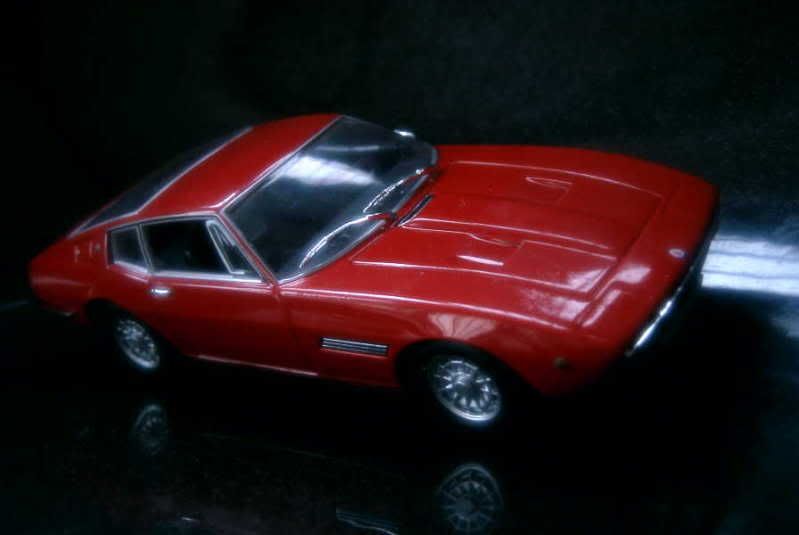
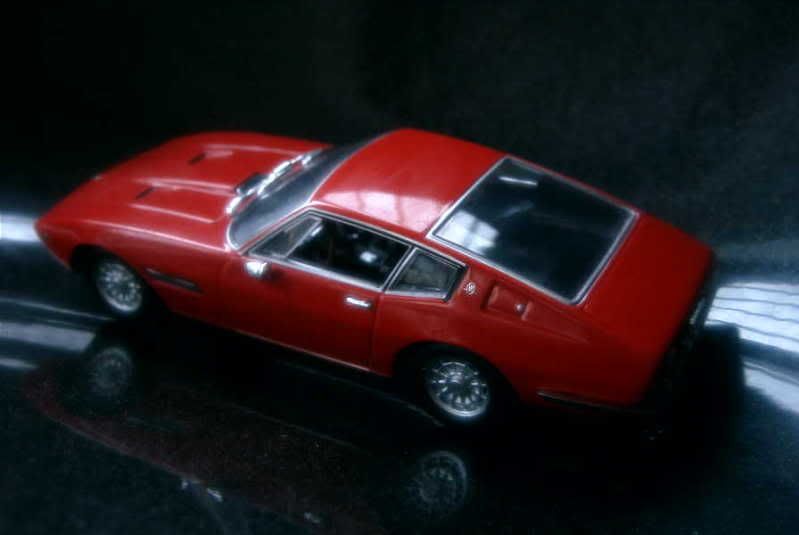
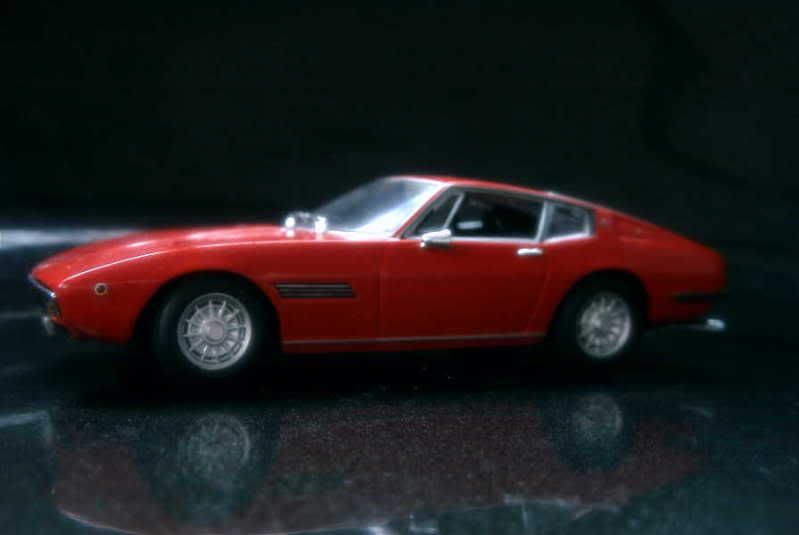

Model: Maserati Ghibli Spyder
Year: c.1969
Maker: Ixo
Scale: 1/43
Distributed by: Ixo, "Maserati" series ref. CLC053
Acquired: brand new, in April 2006, in Manila, Philippines
Minichamps' Chinese arch-rival came up with a good reproduction of the Ghibli... until it is put side by side with the German maker's rendition. Though Ixo made an honest job, any comparison that can be made invariably turns to Minichamps' advantage. Even Ixo's people seem to acknowledge this fact, for they astutely fitted their Ghibli with wire wheels, knowing that photo-etched metal is one of their strong points, instead of the alloy wheels for which Minichamps opted. Despite all this, my rating would still attain a commendable 13/20... but for a relatively small difference in price, my preference definitely goes to the Minichamps version of the car.
Please note that Ixo, as far as I remember, also reproduces a version of the convertible coupe with its hood folded down.
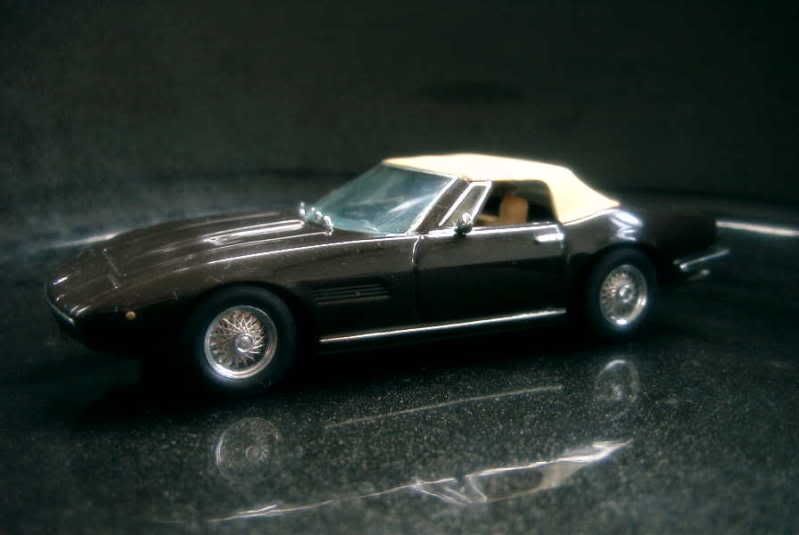
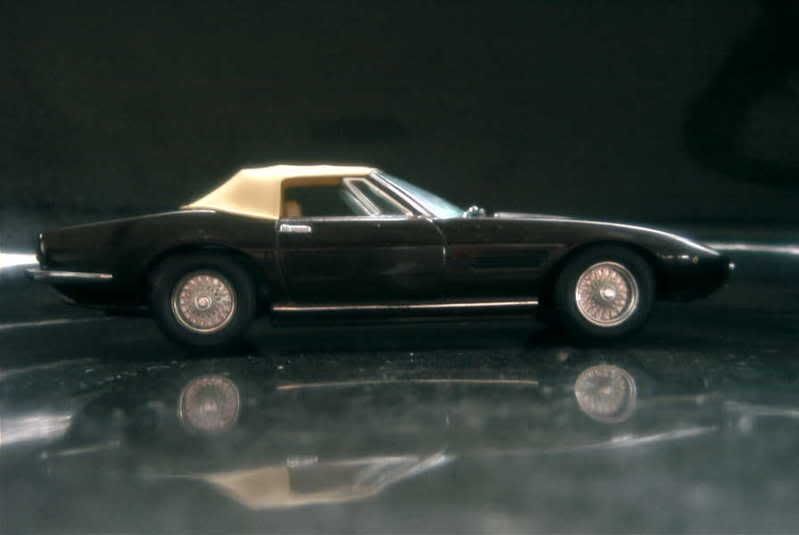
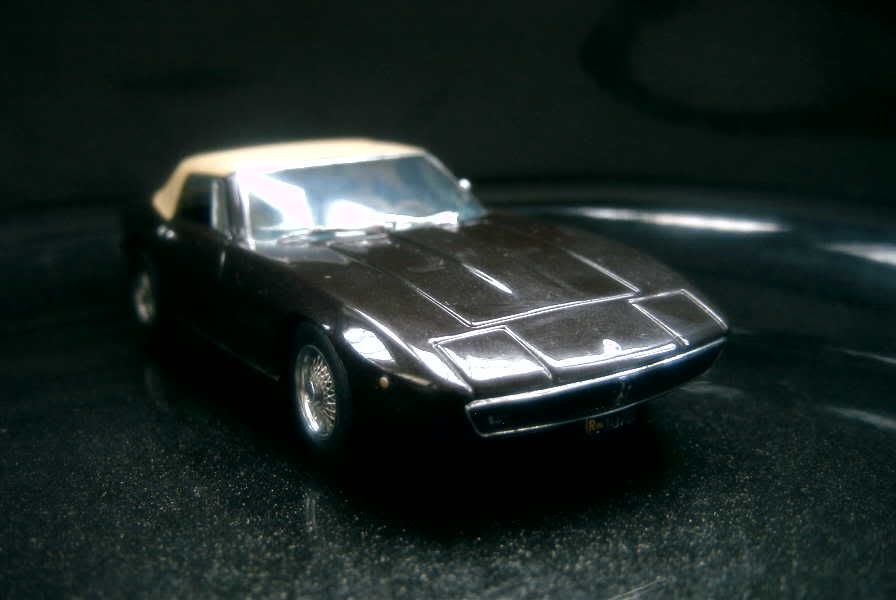
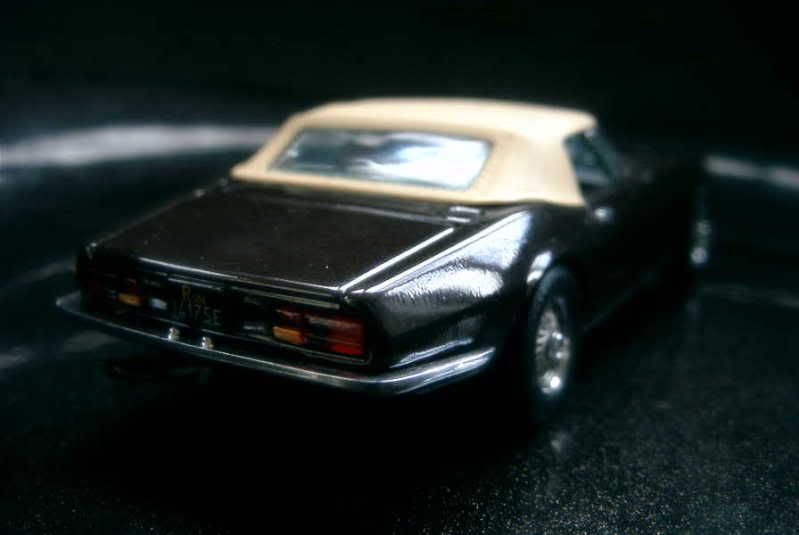
At the 1966 Turin autoshow, Maserati added the Ghibli to a range that already included the 2-seater Mistral, the 4-seater Mexico and the 4-door Quattroporte. The large coupe retained the 4.7-litre V8, good for 330 bhp, already fitted to the later two of its companions. It also followed the practice inaugurated by the Mistral of naming the road cars bearing the famous Trident after a wind - Ghibli is the Italian name for what non-Italians call Sirocco. Hence a much more plebeian Volkswagen shared the inspiration for its name with one of the greatest Maseratis of all times.
Though rival Ferrari had long, strong links with Pininfarina, Maserati didn't have any designer attached to its name in the same fashion. Out of the three other cars in production, two had been imagined by Frua and one by Bertone, while the Ghibli was penned by Giorgetto Giugiaro, then an employee at Ghia. In the process, young Giugiaro drew the lines of what many enthousiasts think is the best-looking GT ever. Praising Maserati above all other Italian Gran Turismo makers, I certainly agree with such an opinion.
The Ghibli hit the market as the first Lamborghini Miuras, launched at Geneva earlier the same year, were being produced. While the Miura was a radical car closely inspired by racing prototypes, the Ghibli was much more traditional, featuring a front engine fed by a bank of four Weber carburettors. Transmission was to the rear wheels through a 5-speed ZF manual gearbox, though an automatic Borg-Warner, necessary to cater to the American market, was also available. Maserati seemed conforted in its relative traditionalism when its largest rival Ferrari unveiled the Daytona, which layout follows the same lines as the Ghibli's, at Turin in late 1968. The main boldness of the Ghibli resided in its pop-up headlights.
As the Maranello company introduced the Daytona, Maserati didn't stay idle. At the very same Turin motor show was presented the Ghibli Spyder, the convertible version of the original Ghibli. Altering the supreme lines of the coupe wasn't an easy task; it was splendidly accomplished nonetheless. To guarantee total gracefulness to the Spyder, it was decided that the hood would be totally enclosed when folded. This noticeably reduced the boot's size, but allowed to keep intact the long horizontal lines of the car when seen from the side.
Both the coupe and the Spyder evolved into new "SS" versions at the end of 1970. A slight increase in stroke boosted the engine's displacement to 4.9 litres. The output was virtually unchanged, at 335 bhp. This improvement partially compensated for the loss recorded by Ghiblis sold on the U.S. market, which were seeing their power eroded by increasing emissions regulations. Nevertheless the Ghibli's production was slowing down, and a replacement was becoming more and more necessary. It finally came in the form of the Khamsin, with was presented in 1972 but didn't enter production before 1974.
About the models
Model: Maserati Ghibli
Year: 1969
Maker: Minichamps
Scale: 1/43
Distributed by: Minichamps ref. 400-123321, limited edition - 2,544 pieces
Acquired: brand new, in February 2006, in Manila, Philippines
There isn't much to reproach to Minichamps about this model. Perhaps the German die-casts maker somewhat lags behind some of its competitors by fitting relatively crude plastic windshield wipers to its models instead of fine photo-etched ones. Apart from this detail, all the beauty of the real car holds in less than twelve centimetres. My rating would be 16/20.




Model: Maserati Ghibli Spyder
Year: c.1969
Maker: Ixo
Scale: 1/43
Distributed by: Ixo, "Maserati" series ref. CLC053
Acquired: brand new, in April 2006, in Manila, Philippines
Minichamps' Chinese arch-rival came up with a good reproduction of the Ghibli... until it is put side by side with the German maker's rendition. Though Ixo made an honest job, any comparison that can be made invariably turns to Minichamps' advantage. Even Ixo's people seem to acknowledge this fact, for they astutely fitted their Ghibli with wire wheels, knowing that photo-etched metal is one of their strong points, instead of the alloy wheels for which Minichamps opted. Despite all this, my rating would still attain a commendable 13/20... but for a relatively small difference in price, my preference definitely goes to the Minichamps version of the car.
Please note that Ixo, as far as I remember, also reproduces a version of the convertible coupe with its hood folded down.







No comments:
Post a Comment